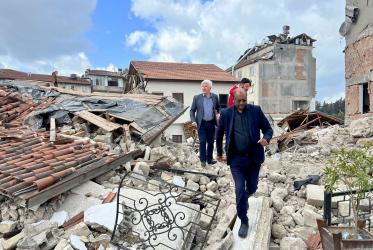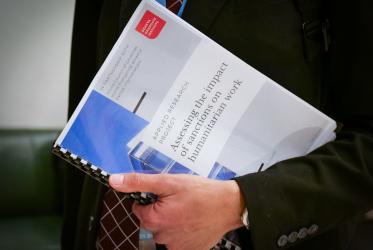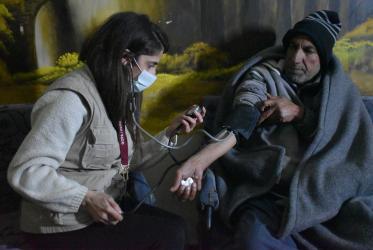Syrisch-Orthodoxes Patriarchat von Antiochien und dem gesamten Morgenland
According to tradition, St Peter established the Holy See at Antioch in AD 37 and presided over the church, prior to his journey to Rome. In the 4th century the Catholicate of the East was established for the administration of the churches in the Persian Empire, Iraq and the Far East. Syrian missionaries went as far as India, China, and Mongolia. An outstanding saint was St Jacob Baradaeus (500-578) who revived the spiritual life of the church in Syria, Armenia, Egypt, Persia and Cyprus. At the beginning of the 13th century the Syrian Orthodox Church had about 20,000 parishes and hundreds of monasteries and convents. During the 14th century the church suffered greatly through the Mongol invasions. At the end of the 18th century its strength was further reduced because of the establishment of a separate Uniate Patriarchate of Antioch (Syrian Catholics), and at the turn of the present century it suffered severe persecution at the hands of the Ottoman Turks. Hundreds of thousands perished. In 1964 the Catholicate of the Orthodox Syrian Church of the East, vacant for centuries, was re-established in India. The seat of the patriarchate, after many moves over the centuries, is now in Damascus.
The Syrian Orthodox Patriarchate of Antioch and All the East (SOPA) refused to accept the decisions of the Council of Chalcedon about the person of Christ, on the ground that they had made too many concessions to the Nestorians. Their doctrinal position is thus similar to that of the Armenian, Coptic and Ethiopian churches. Veneration of the saints and prayers for the dead are essential elements of the church's tradition. The seven traditional sacraments are recognized. The Old Testament was translated into Syriac during the first century, the New Testament in the second century.
The liturgical language of the church is Syriac Aramaic. Other Syriac translations of the Bible were subsequently made by various Syrian scholars. Famous schools of theology were established in Antioch, Nassibeen, Edessa and Qenneshreen. St Aphrem the Syrian, St Jacob of Sarug, Philexinos of Maboug and Jacob of Edessa graduated from these schools. Ignatius Ephrem Barsaum (Patriarch, 1933-57) was the author of a valuable history of Syrian Orthodox literature in Arabic (recently published in English: History of Syriac Sciences and Literature). Since the church has spread widely during the centuries, languages like Arabic, Malayalam, Turkish, English, Spanish and Portuguese are today used, alongside Syriac, in religious services.
The SOPA maintains a number of monasteries which are an integral part of its spiritual and cultural heritage. There are two major and three minor seminaries for the training of the clergy. The church also operates other schools and institutions. It has close relations with the Coptic, Armenian and Ethiopian Orthodox churches.
The Syrian Orthodox church is also portrayed on the 'Keeping the Faith' website.





